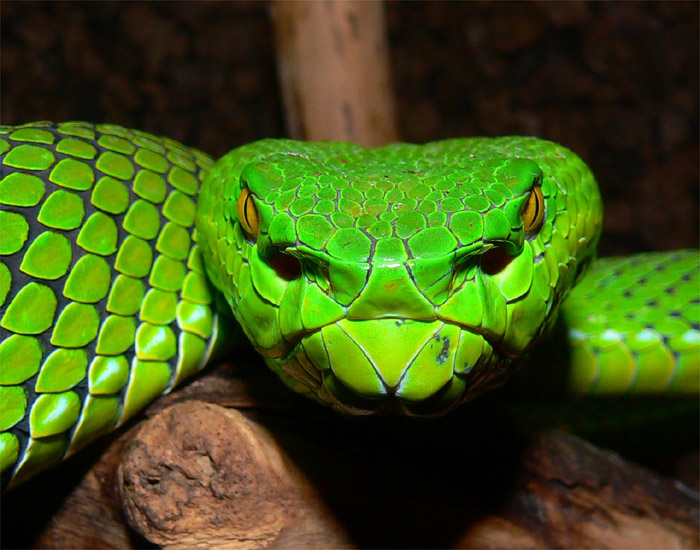The Shining South African Snake Monster June 4, 2015
Author: Beach Combing | in : Modern , trackbackBeach spent a few minutes going through Heuvelmans’ wonderful On the Tracks of Unknown Animals but could find not hint of this ‘thing’. The following description appeared in 1899 in some nature notes in a British newspaper!
The natives of Natal [South Africa] have implicit faith in the existence of the lamp snake, which they call amningi. This reptile is supposed to frequent swamps or lakes, and is so vast that on occasion when one of the species was attacked and killed by a Boer party its carcass filled a couple of waggons.
Ok so we have a very long snake: perhaps even forty or fifty feet long. If this was all it would not have found its way onto Strange History. Its signature weirdness is its light:
The light emitted by this monster is bright and dazzling in the extreme, and can be easily discovered from a distance of a couple miles or more.
Usually cryptos explain the fact that this or that animal have not been caught because they only eat by moonlight or some such: such excuses are made, for instance, in relation to the moas (should they survive in New Zealand). That excuse does not work with old lampy though, who must be the least well camouflaged creature on the planet ‘a couple of miles or more’.
Naturally, this radiance is visible by night only, and the animal is supposed to be phosphorescent. A native relates that he has often seen the lamp snake in the pools of the Umvoti River, where it passes through thorn country. He says it is not uncommon, and in colour very pale, almost white, with brown patches about it. On a dark night it ‘makes’ a light in the pool, which shines so brightly that when one first sees it one’s eyes blink.
Some animals do become phosphorescent: there is a celebrated article about phosphorescent owls in relation to British Will o’ the Wisps. However, what would cause a shining snake? Or what is still strange a shining snake in water? Could we be dealing with a long South African snake that, for reasons that presently escape explanation, was more than usually shiny?
Any other explanations: drbeachcombing AT yahoo DOT com
Reading this Beach was reminded by some wonderful scenes in the old Sherlock Holmes films about phosphorescent monsters.
7 June 2015: Bruce T writes, ‘Shining river snakes? That’s a new one on me, at least in Africa, but the belief in river dwelling, divine snakes of great size is a common one in Southern Africa. The Zambezi below Victoria Falls is reputed to be the lair of a great black snake. The association of huge snakes/dragons with large winding rivers seems to be common across the planet. From the nearest hill, a winding river looks like a great snake moving across the country. I’ve always suspected that the belief came about to explain unexpected drownings in traditional societies, but that’s the Occam in me.’ Thanks Bruce!
30 June 2015: Bruce T adds ‘There’s a Cherokee legend about a large serpent like creature that lives in the headwaters of streams in the mountains of southern Appalachia. It has red eyes and large crystal in the middle of it’s forehead. As I recall, If someone saw it, they either died on the spot or they and their nearest and dearest were cursed for life. The ethnologist John Swanton recorded the story in the early 1900’s while studying the eastern band of the Cherokee in the Smokey Mountains of North Carolina. I meant to pass it along, but I can’t find the source I read it in, Charles Hudson’s “A History of The Southeastern Indians”. Hudson is one of those “we’re not worthy” historians you write about.’
21 July 2015: Bruce T writes in again, ‘Bruce T writes in ‘The Creek had a great shining water snake they revered called the Sinti Lapitta. The Sinti Lapitta was a form of the “Horned Serpent” mythos common amongst the Native Americans of the Southeast and Mississippi Valley. The Horned Serpent was normally depicted with feathers in much of the region, giving rise to speculations of a Mesoamerican origin. However, the mythos of the Feathered/Horned Serpent seems to be a worldwide phenomena. I would be very careful in assigning it’s origins in the America’s to Mesoamerican sources, no matter how tempting. Unlike the dangerous, similar river-dwelling horned serpent from the same region, called the Uktena in Cherokee folklore, the Sinti Lapitta seems to have been a benevolent entity who took young children away from their villages to instruct them in becoming shamans. Like the Uktena it could shape-shift into many forms, including that of a human. If you were befriended by a Sinti Lapitta you were bound for great things. By the way, I believe I saw a discussion on your blog of the Piasa glyphs near Alton, Illinois. He’s one of these water serpents. In fact the Piasa and Sinti Lapitta both had antlers, the latter of various colors and useful for many types of medicine making. The Piasa seems to be close in attributes to another figure in the Mississippian period and following, the “Water Panther”. As Alton is the beginning of the American Bottom and the territory of the people of the Cahokia polity, the Piasa paintings, much like the early Dynastic Egyptian public art on the edge of what is now the Sudan in the Nile Valley, could have been a very pointed way of telling other agricultural peoples moving down river “No trespassing”. Thanks Bruce!



